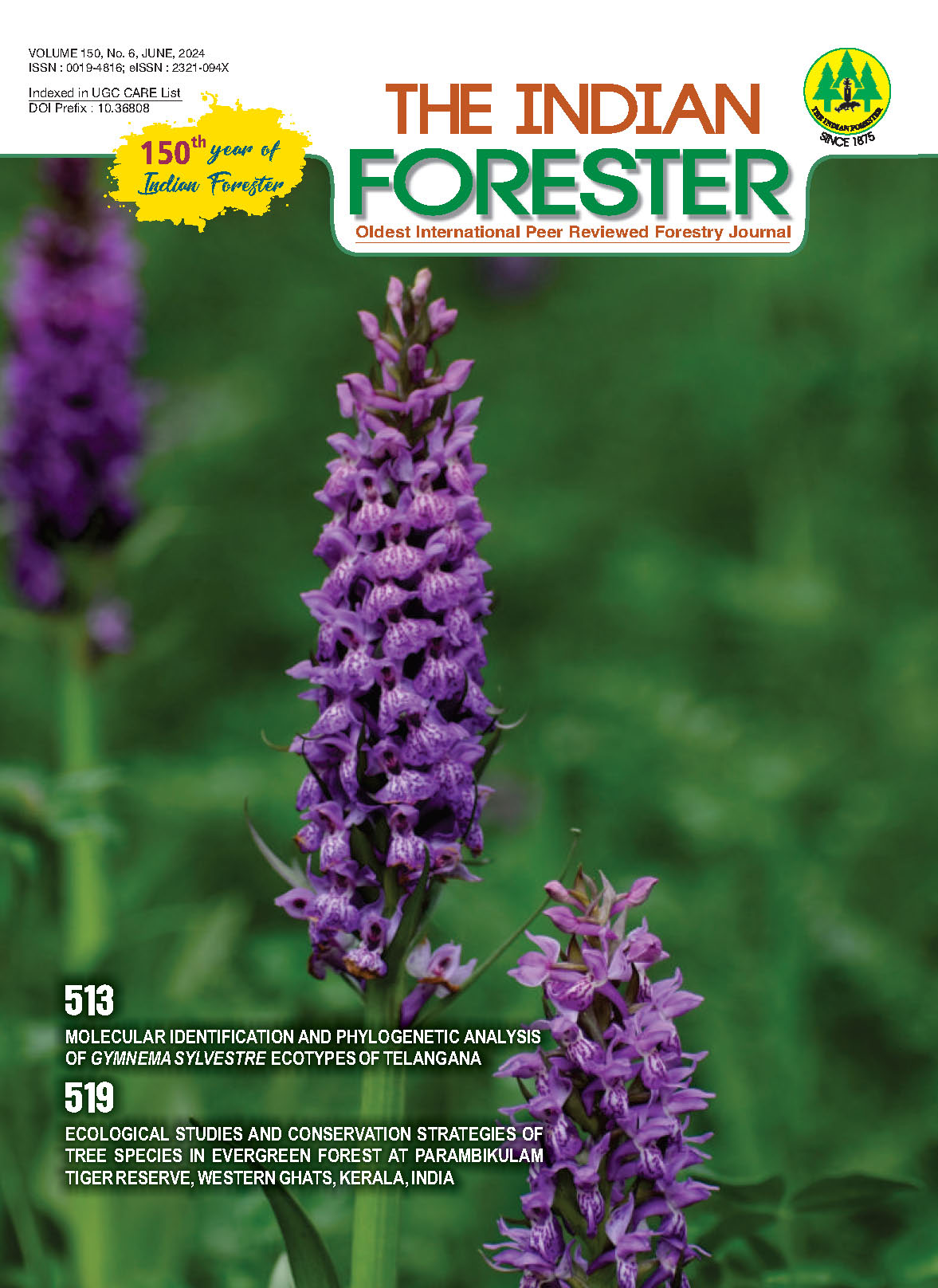Diversity and Conservation status of Angiosperms in Sringeri Forest Range of Central Western Ghats, Karnataka
DOI:
https://doi.org/10.36808/if/2024/v150i6/170279Keywords:
Conservation, Distribution, Diversity, Ecology, Regeneration, Plant population.Abstract
The present study has shown that the Sringeri forest range has a good floristic diversity of trees, climbers, herbs and shrubs, which contribute to the overall biodiversity of the forest. To document the floristic diversity quantitative and qualitative methods were used. The study yielded a total of 413 angiosperm species of herbs, shrubs, climbers and trees. Among them three species are in endangered and four species are in nearly threatened and status according to IUCN Red list. Statistical analysis of the endangered species shows that Hopea ponga is the most abundant trees in the region and also highest abundantly regenerated species observed in sapling condition. Another endangered species Syzygium caryophyllatum has showed highest density among the regenerated species observed in seedling condition. The reasons are discussedin this article to encourage this kind of studies which showers light on the importance for conservation. The area of study might be small with a geographical area of 7201 km2 but it can impact on others to make this kind of ecological studies that helps in determining the ecological status of those areas.
References
Balakrishna Gowda. (2004). Plant wealth of Sringeri. Kalpatharu Research Academy, Bangalore.
Chavda N. H., and Mehta S.K.. (2015). Study of species diversity of trees and shrubs in Bhandaria Forest Area, District–Bhavnagar, Gujarat. International Journal of Pure & Applied Bioscience, 3: 356-361
Cottam, G. and Curtis, J.T. (1956). The use of distance measurements in phytosociological sampling. Ecology, 37: 451-460.
IUCN Red List of Threatened Species : https://www.iucnredlist.org/ Kumaraswamy Udupa, E.S. and K. Krishnaswamy K.. (2012). Studies on distribution and biology of orchids in Chikmagalure district, Karnataka. Ph.D. thesis submitted to Kuvempu University, Shankaraghatta, Shimoga, India.
Pasion, B.O., Roeder, M., Liu, J., Yasuda, M., Corlett, R.T., Slik J.W. and Tomlinson K.W., (2018). Trees represent community composition of other plant life forms, but not their diversity, abundance or responses to fragmentation, Scientific Reports, 8: 11374
Rao U., Nayak V, Nagaraja, B.C, Shailaja, K.A, Chandrashekara, U.M and Swamy R (2000). A contribution to flora of Chikkamagaluru district, Karnataka, Journal of Economic and Taxonomic Botany, Vol. 24. No.2
Shanon, C.E. and W. Wiener W., (1963). The mathematical theory of Communication. University of Illinosis Press, Champaign.
Simpson, E.H. (1949). Measurement of Diversity. Nature, London.
Sringeswara, A.N., Shivanna, M.B., and Balakrishna Gowda, (2005). Floristic diversity in Kudremukh National Park, Western Ghats, Karnataka. Kuvempu University, Shivamogga.
Yoganarasimhan, S.N., Subramanyam K., and Razi B.A., (1982). Flora of Chikmagalur district, Karnataka, India. International book distributors, Dehra Dun.
Downloads
Downloads
Published
How to Cite
Issue
Section
License
Unless otherwise stated, copyright or similar rights in all materials presented on the site, including graphical images, are owned by Indian Forester.





